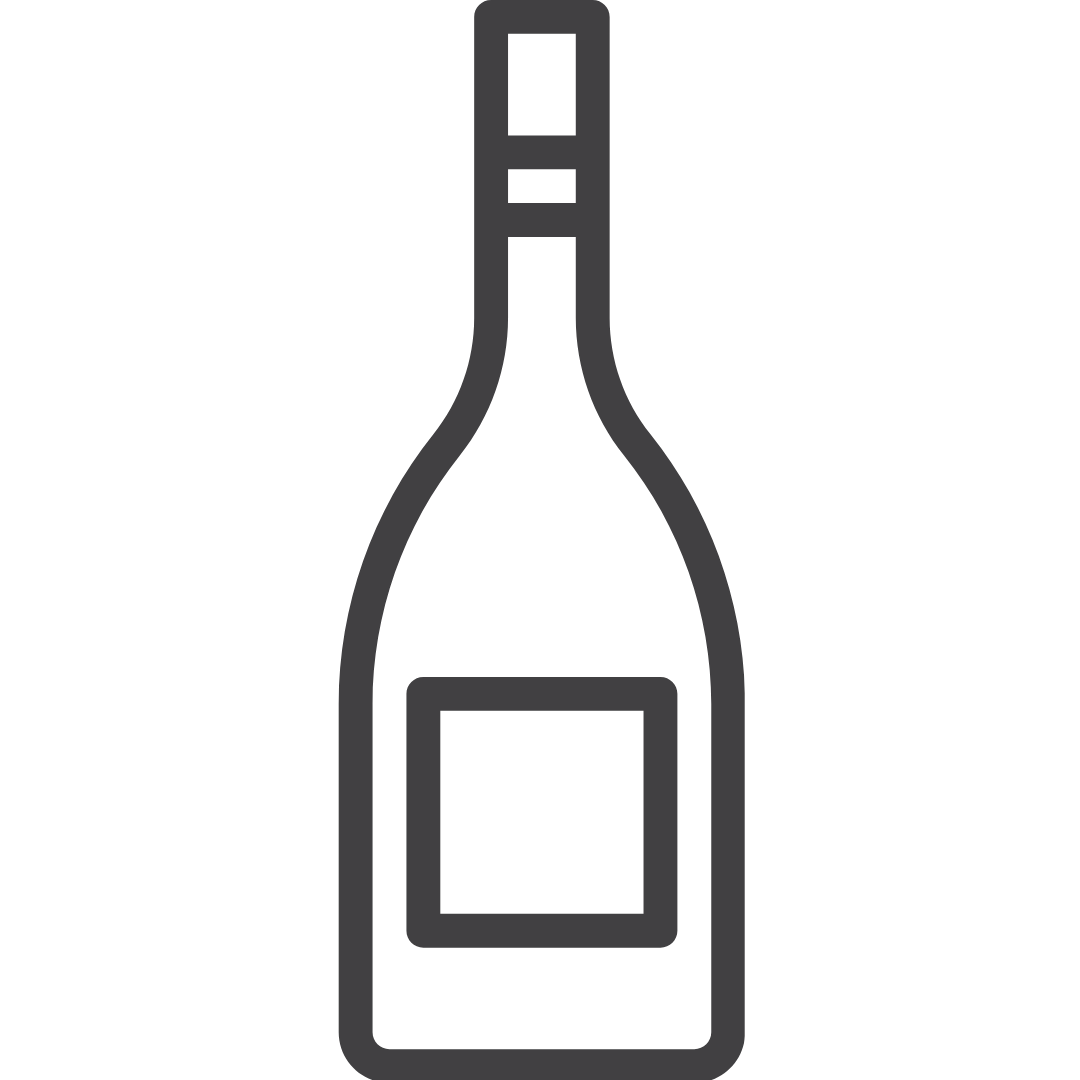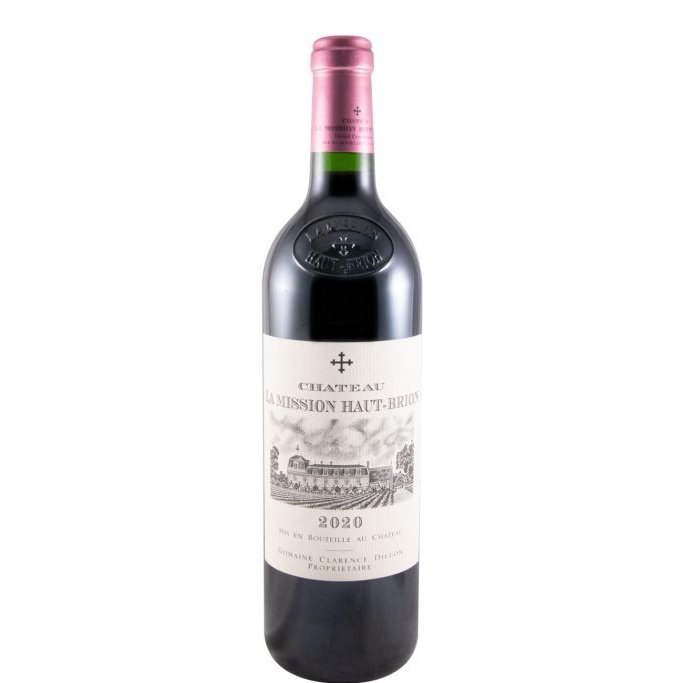Château La Mission Haut-Brion Pessac-Léognan Red 2020
Château La Mission Haut-Brion Pessac-Léognan Red 2020
Couldn't load pickup availability
 Château La Mission Haut-Brion
Château La Mission Haut-Brion
 France
France
 Bordeaux
Bordeaux
 2020
2020
 Merlot, Cabernet Sauvignon, and Cabernet Franc
Merlot, Cabernet Sauvignon, and Cabernet Franc
 Gravelly soil upon a unique subsoil of clay, sand, limestone and shelly sand.
Gravelly soil upon a unique subsoil of clay, sand, limestone and shelly sand.
 New barrels: 76.8%.
New barrels: 76.8%.
 75cl
75cl
 14,50%
14,50%
 16ºC - 18ºC
16ºC - 18ºC
Share

The story
1540 - The Lestonnacs and the birth of La Mission Haut-Brion
Historically speaking, the two properties have been connected since 1540, when the Bordeaux merchant Arnaud de Lestonnac purchased a plot known as Arregedhuys, the starting point for La Mission Haut-Brion. That same year, he married Marie, the only sister of Jean de Pontac, the true father of Château Haut-Brion. Aware of the tremendous potential of Graves de Haut-Brion thanks to his relationship with the Pontacs, Arnaud de Lestonnac worked hard, plant by plant and plot by plot, to create an estate dedicated entirely to winegrowing.
1572 - Building the future
Upon his death in 1548, his fourth son Pierre took over the business. The year 1572 was an especially happy one: he became a “jurat” (type of judge) in Bordeaux, began new building work on the property – a house and a cellar – and his daughter Olive was born. She would play an even more important role in the history of the vineyard.
1607 - A lifetime of devotion
Olive de Lestonnac devoted her life and her fortune to various philanthropic and religious actions. Three times married and three times widowed, with no children, she focused on her charity work.
Olive de Lestonnac died at the age of 80. Her will mentions 200,000 pounds donated to a number of religious causes – a colossal sum at the time, but a fraction of what she gave away in her lifetime. After a few twists and turns, this annuity led to the creation of La Mission Haut-Brion. In 1682, the legacy was transferred to the Lazarists of Bordeaux, also known as the Priests of the Mission. La Mission Haut-Brion came into being, under the ownership of the Catholic Church.
1682 - The priests of the Mission
On their arrival, the Lazarist priests began to develop the vineyard, transforming the remaining plots of coppices into vine. Throughout the 18th century, they worked hard to improve the cultivation of the vines and the quality and reputation of their wine.
1792 - The French Revolution
In the early 1790s, the French Revolution hit Bordeaux hard and the estate was confiscated in 1792. The untouchable authority of the Church under the Ancien Régime led to its demise. Following the Revolution, it was forced to give all its property over to the State. The Mission therefore became a target of the Revolutionary forces, and was sold at auction as a “national asset” to a Bordeaux businessman, Martial-Victor Vaillant.
1821 - The Chiapellas, from New Orleans to Bordeaux
In 1821, the estate was sold to Célestin Coudrin-Chiapella, the first American owner to fall under its charm. Born in New Orleans, Louisiana, in 1774, Chiapella was the adopted son of a rich Genovese merchant. He purchased the property with the aim of retiring to Bordeaux, where he already worked as a merchant and managed several estates, including Château Cos d’Estournel. The Chiapellas – Célestin and his son Jérôme – continued to improve the property. They enclosed the vineyard and, according to a drawing found in the Lazarist archives, built the superb wrought iron gate that still stands at the entrance to the estate.
1862 - The London International Exhibition
Thanks to his links with Louisiana, Célestin Chiapella developed trade between Bordeaux and New Orleans and at the same time, he continued to develop the vineyard and improve the quality of the wine. As a reward for their efforts, Château La Mission Haut-Brion won the gold medal at the International Exhibition in London in 1862. In 1884, Jérôme Chiapella sold the estate to Établissements Duval de Paris. At that time, Château La Mission Haut-Brion enjoyed a wonderful reputation in France, Great Britain and the United States.
1919 - The Woltner family and the modern era
In 1919, La Mission Haut-Brion entered the modern era when it was purchased by Frédéric Otto Woltner, another Bordeaux merchant. Despite the many changes in ownership over the previous 25 years, the estate was still extremely highly thought of, even though Château La Mission Haut-Brion was still using old 19th century technology, like most of the great Bordeaux vineyards.
1926 - A pioneering spirit
In 1926, with the help of his two sons, Frédéric Woltner brought La Mission into the modern era. He was the first to install enamelled steel vats with vitrified interior coating. This remarkable innovation for the time helped to control the temperature better during the fermentation process. From 1927 onwards, he also produced Château La Mission Haut-Brion White.
Frédéric Woltner launched the tradition of inscribing the most prestigious Château La Mission Haut-Brion vintages in gold lettering in the Chapel. Positioned at the base of the Notre-Dame d’Aubrion vaulted ceiling. Upon his death in 1933, the estate passed on to his three children. Having worked alongside his father for a long time and studied oenology, Henri was the natural heir designated to manage La Mission. Henri Woltner died in October 1974, having overseen the production of 50 vintages at Château La Mission Haut–Brion. Francis Dewavrin, the husband of one of his nieces, then managed the business successfully for several years.
1983 - The Dillon family
When Château La Mission Haut-Brion was put up for sale, Domaine Clarence Dillon was one of the primary candidates to take it over. Their offer was accepted in 1983, with the sale taking place on November 2nd. Inspired by the ecclesiastical ethics and devotion of the Lazarists, the Dillon family immediately began to improve the whole estate making significant renovations.
2009 - The sixth Premier Cru wine
On March 10th 2009, Liv-Ex, the leading global marketplace for fine wines, reviewed the 1855 classification to create a new classification for Bordeaux wines in the context of the modern economy. The most notable difference was the inclusion of Château La Mission Haut-Brion as a Premier Cru wine! In May 2008, 26 journalists gathered in the London restaurant, The Square, to taste 51 Château La Mission Haut-Brion vintages. Prince Robert of Luxembourg invited the greatest critics in the world to take part in a rare chronological tasting from 1953 to 2005, to celebrate 25 years of the Dillon family’s ownership of the estate. Robert Parker wrote in 'Vintage Profile': “In my personal collection, I have more bottles of La Mission Haut-Brion than any other wine in the world. La Mission has been one of the best wines for a long time, and one of the most constant in terms of quality”.
Terroir
Château La Mission Haut-Brion’s vineyard stretches across land in the municipalities of both Talence and Pessac and is located just a few miles southwest of Bordeaux’s city center. It belongs to the Pessac-Léognan appellation, in the northern part of the Graves winegrowing area. The property stands opposite Château Haut-Brion and shares the same vast terrace of superb gravelly soils, ideal for cultivating vines, already referred to as “Haut-Brion” on ancient maps and deeds.
The vineyard covers a total area of 29 hectares (approximately 72 acres). Almost 25 hectares are planted with red grape varieties Merlot, Cabernet Sauvignon and Cabernet Franc, and just over 4 hectares are devoted to white grape varieties Sémillon and Sauvignon Blanc.











